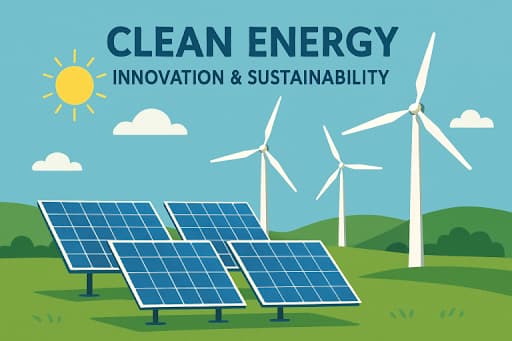Table of Contents
- The New Wave of Clean Energy Technologies
- Global Leadership and Policy Drivers
- Investment Trends in Sustainable Energy
- The Role of Research and Academia
- Community and Social Impacts of Clean Energy
- What’s Next for Clean Energy Innovation?
The New Wave of Clean Energy Technologies
The rapid rise of renewable power sources is reshaping the global energy landscape, offering practical solutions to the pressing challenges of climate change and resource depletion. Advances in solar, wind, hydrogen, and battery storage technologies are making clean energy more efficient and accessible than ever before. These breakthroughs reduce reliance on fossil fuels and enable nations and industries to move toward a more sustainable future. By addressing environmental concerns and economic growth, innovative energy systems are paving the way for long-term resilience.
Among the visionaries driving this shift is KR Sridhar, whose work with fuel cell technology highlights the transformative potential of clean power. His contributions underscore how forward-thinking innovations can balance global energy demand with environmental stewardship, inspiring continued progress toward sustainable solutions worldwide.
Global Leadership and Policy Drivers
Meaningful progress in clean energy adoption is rarely accidental. International agreements like the Paris Climate Accord and proactive national policies underpin significant developments. Governments worldwide are enacting greenhouse gas reduction targets, supporting clean power generation with subsidies, and introducing more demanding emissions standards for agriculture, transportation, and industry. Policy drivers are everywhere—from the European Union’s Green Deal to the United States’ Inflation Reduction Act, designed to accelerate the transition to renewables and reward sustainable innovation.
Investment Trends in Sustainable Energy
The clean energy sector’s dynamism is evident in investment trends. According to the International Energy Agency, global investment in renewable energy hit a record high in 2023—over $1.7 trillion. Venture capital flows into early-stage companies developing hydrogen fuel cells, offshore wind platforms, and carbon capture technologies. Major institutional investors, pension funds, and sovereign wealth funds are increasingly shifting their portfolios toward sustainable assets. Sectors enjoying robust growth include solar photovoltaics, battery storage, EV charging infrastructure, and green hydrogen production.
The Role of Research and Academia
Universities and research institutions are a driving force behind clean energy innovation. Collaborative initiatives between academia and the private sector deliver materials science, chemistry, and systems engineering breakthroughs. Partnerships like the MIT Energy Initiative and consortia that connect universities with energy companies are harnessing expertise, enabling access to critical data, and developing new business models to bridge the lab-to-market gap. University spinouts and incubators also play an increasing role in commercializing clean tech breakthroughs.
Community and Social Impacts of Clean Energy
The transition to clean energy is yielding substantial benefits for local communities. Renewable projects are creating new high-skill jobs, boosting local economies, and driving waves of entrepreneurial activity. In many rural and underserved areas, decentralized solar and wind installations provide reliable power, improve educational and healthcare outcomes, and reduce energy poverty. Global communities are tapping into sustainable resources to generate resilience against climate impacts.
What’s Next for Clean Energy Innovation?
Looking ahead, artificial intelligence-powered energy management trends, advanced grid technologies, and next-generation fusion research promise to redefine what’s possible in sustainable energy. Integrating digital twin software and real-time grid modeling will unlock operational efficiencies in power generation and delivery. As more investment flows toward research and global partners build on their successes, the outlook for clean energy innovation is brighter than ever.
With an ongoing commitment to research, global policy alignment, and a focus on equitable growth, the clean energy revolution is only just beginning to realize its transformative potential for economies, communities, and the planet.




